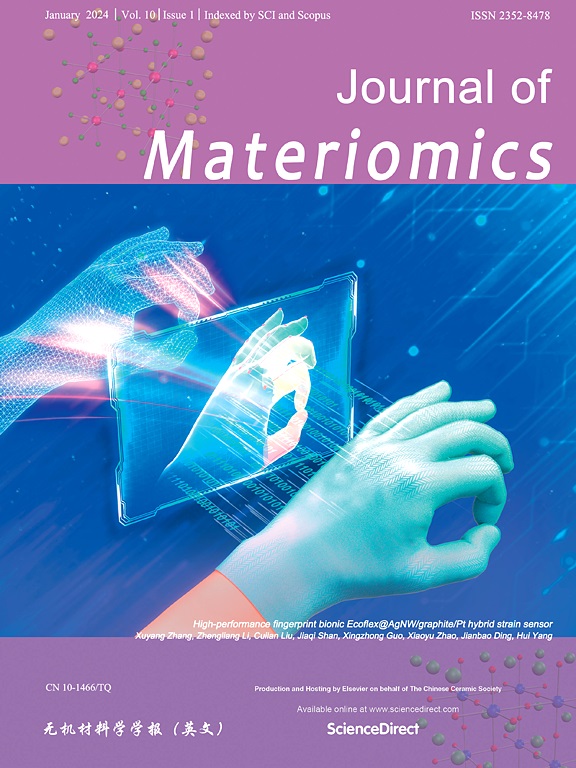Influence of electrode contact arrangements on Polarisation-Electric field measurements of ferroelectric ceramics: A case study of BaTiO3
IF 8.4
1区 材料科学
Q1 CHEMISTRY, PHYSICAL
引用次数: 0
Abstract
A range of partial top full bottom electrodes are used to explore the use of bi-polar Polarisation-Electric field (P–E) measurements to quantify recoverable energy (Wrec), energy loss (Wloss) and the efficiency (η) of ferroelectric BaTiO3 ceramics. The values obtained are dependent on the ratio of sample thickness (S) and top contact radius (r). With increasing S/r from 0.17 to 1.96 the P–E responses become increasingly distorted and broader. Measurements show Wrec increases by a factor of ∼1.4 but Wloss increases by a factor of ∼7 with η decreasing from ∼29% to 8%. Finite element modelling was used to simulate the experimental set-up of the sample/electrode arrangements using the Jiles-Atherton model to replicate the ferroelectric behaviour of BaTiO3. These models demonstrate the experimentally applied electric field using a simple geometric correction for sample thickness is an underestimation of the actual field experienced by the material under the top contact at high S/r values. We stress the importance of reporting the contact sizes and thicknesses of samples when using P–E measurements to assess Wrec, Wloss and η in non-linear dielectric materials. This will allow a fairer comparison of performances between various types of materials being considered for high-energy-density ceramic capacitors.

电极接触排列对铁电陶瓷极化电场测量的影响:以BaTiO3为例
采用部分顶部全底部电极,探索利用双极极化电场(P-E)测量来量化铁电BaTiO3陶瓷的可回收能量(Wrec)、能量损失(Wloss)和效率(η)。得到的P-E值取决于样品厚度(S)和顶部接触半径(r)的比值。随着S/r从0.17增加到1.96,P-E响应变得越来越扭曲和宽。测量结果表明,Wrec增加了约1.4倍,而Wloss增加了约7倍,η从约29%降至8%。利用Jiles-Atherton模型模拟了样品/电极排列的实验设置,以复制BaTiO3的铁电行为。这些模型表明,通过对样品厚度进行简单的几何校正,实验施加的电场是对高S/r值下顶部接触下材料所经历的实际电场的低估。我们强调在使用P-E测量来评估非线性介电材料中的Wrec、Wloss和η时报告样品的接触尺寸和厚度的重要性。这将允许更公平地比较用于高能量密度陶瓷电容器的各种材料之间的性能。
本文章由计算机程序翻译,如有差异,请以英文原文为准。
求助全文
约1分钟内获得全文
求助全文
来源期刊

Journal of Materiomics
Materials Science-Metals and Alloys
CiteScore
14.30
自引率
6.40%
发文量
331
审稿时长
37 days
期刊介绍:
The Journal of Materiomics is a peer-reviewed open-access journal that aims to serve as a forum for the continuous dissemination of research within the field of materials science. It particularly emphasizes systematic studies on the relationships between composition, processing, structure, property, and performance of advanced materials. The journal is supported by the Chinese Ceramic Society and is indexed in SCIE and Scopus. It is commonly referred to as J Materiomics.
 求助内容:
求助内容: 应助结果提醒方式:
应助结果提醒方式:


